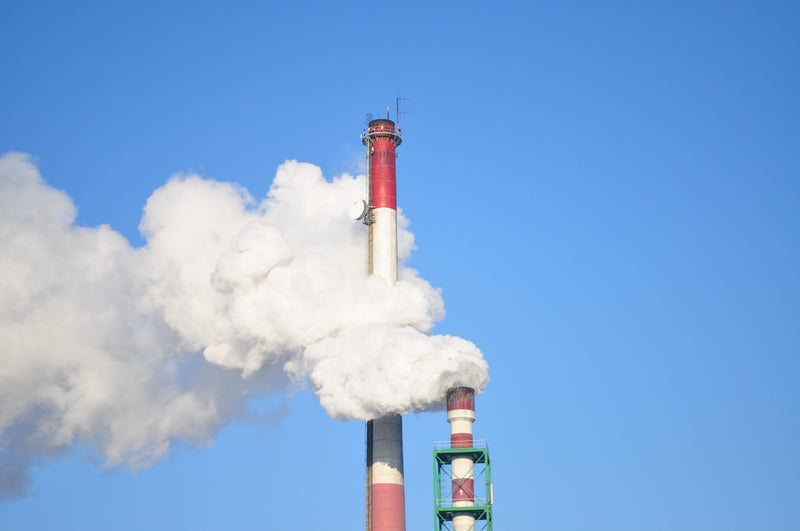

With growing concerns about the environment, there has been a surge of innovation to help companies become more eco-friendly. More and more organizations embrace green technologies and fuel substitutes. This trend has necessitated the creation of environmentally friendly innovations and technologies. In this article, we’ll take look at some of the green technologies that have evolved in recent years.
-
LED light efficiency
Energy-efficient LED lighting is quickly replacing traditional incandescent bulbs in homes and is expected to achieve 84 percent market share by 2030. In 2030 alone, LED lights will reduce energy consumption by 40 percent, which adds up to $26 billion in savings adjusted to today’s energy prices. LED lights are capable of changing the lighting scenario of the globe completely in the near future. They are also widely used in electronics and gadgets like LED Televisions, watches, and mobile screens. LED lighting provides many environmental advantages, including being energy efficient, producing zero toxic elements, requiring less light fixtures, and having a longer life span.

-
Accessible solar power
Renewable energy continues to become cheaper and more accessible into 2022, a trend that has major implications for the nearly 1 billion people across the globe without access to electricity. While expanding the grid is part of the access solution, countries in sub-Saharan Africa and the Caribbean, which account for most of the world’s unelectrified population, are exploring renewable solutions like solar energy to bring energy quickly and inexpensively to millions.

-
Carbon capture and storage
Instead of just focusing on completely decarbonizing the major industrial commodities behind plastics and cement, we can also consider safely capturing the carbon emitted when these commodities are produced. Carbon Capture and Storage (CCS) is a way of reducing carbon emissions, which could be key to helping to tackle global warming. It’s a three-step process, involving: capturing the carbon dioxide produced by power generation or industrial activity, such as steel or cement making; transporting it; and then storing it deep underground. There are 19 direct air capture facilities in operation around the world, according to the International Energy Agency. Fifteen of these are operated by Swiss company Climeworks, and its most recent DAC facility highlights both the promise of vacuuming up CO2 and the remaining hurdles to large-scale builds. Climeworks has the backing of influential brands, like Shopify and Microsoft, which have purchased future removal of CO2 as the facility expands. The Climeworks team plans to scale up the Orca plant by 2024 and is shooting for a global rollout in 2027 which, it says, would see a hundredfold increase in removal.

-
Green Hydrogen
Green hydrogen is a clean energy source that only emits water vapour and leaves no residue in the air, unlike coal and oil. Decarbonising the planet is one of the goals that countries around the world have set for 2050. To achieve this, decarbonising the production of an element like hydrogen, giving rise to green hydrogen, is one of the keys as this is currently responsible for more than 2 % of total global CO2 emissions. Green hydrogen is forecast to fill 15% to 20% of the world's energy needs that will not be easily met with battery, wind, or solar power. Heavy industries must decarbonize dramatically to reach net zero. Replacing fossil fuels with green hydrogen, created with renewable energy, is one way to reduce emissions.

-
Electric trucks
With personal electric vehicles grabbing more and more market share, commercial fleets could follow suit rapidly. But to ensure an efficient transition, we need a firm understanding of the total cost of ownership. Decades ago, widespread adoption of electric trucks—or “eTrucks”—was cost prohibitive. But today, the total cost of ownership could soon be on par with diesel-run trucks, due in part to increasingly cost-competitive and available electric vehicle infrastructure. We predict that the adoption of battery electric commercial vehicles (BECVs), especially in the light- and medium-duty segments, could surpass the car EV sales mix in some markets by 2030.

-
Cheap energy storage
The new age of electric vehicles has rapidly expanded the market for lithium and cobalt batteries—and drastically reduced their price. Lithium-ion batteries now cost $150 per kilowatt-hour compared to $1,000 per kilowatt-hour just nine years ago. The expanded market for batteries has implications for more than just EVs. Industry and utilities are finding broader use for them as energy-storage solutions. With prices for batteries rapidly dropping, they are proving valuable in reducing power costs, increasing reliability and resiliency, and making power systems more flexible to operate.

-
Plastic recycling
400 million tons of plastic waste is generated across the globe every year, but only 16 percent gets recycled. This process – known as chemical recycling – has been explored as a viable alternative to conventional recycling for decades. Chemical recycling is an attempt to recycle the unrecyclable. Instead of a system where some plastics are rejected because they are the wrong colour or made of composites, chemical recycling could see all types of plastic fed into an "infinite" recycling system that unmakes plastics back into oil, so they can then be used to make plastic again.

Ultimately, these innovations can only do so much to reduce a carbon footprint. The greatest benefit of all these technologies is that they can help improve awareness of climate change and what we can do to curb it. As people become more and more aware of just how devastating climate change can be, there will hopefully be a greater push toward environmentally-friendly policies to decrease the impacts of pollution on our planet. All the innovations we mentioned above are simply the first wave of new technologies that will help us solve this very serious problem. There are many other innovators out there looking for new ways to get us off our addiction to fossil fuels and reduce carbon emissions, and it's exciting to think about all the possibilities that are out there.














